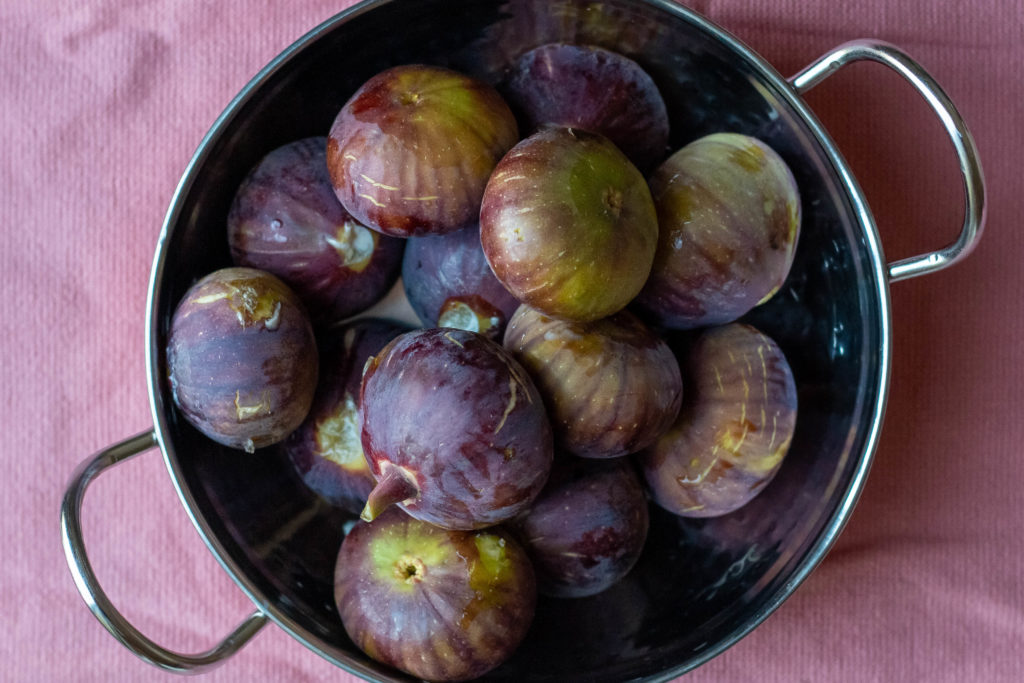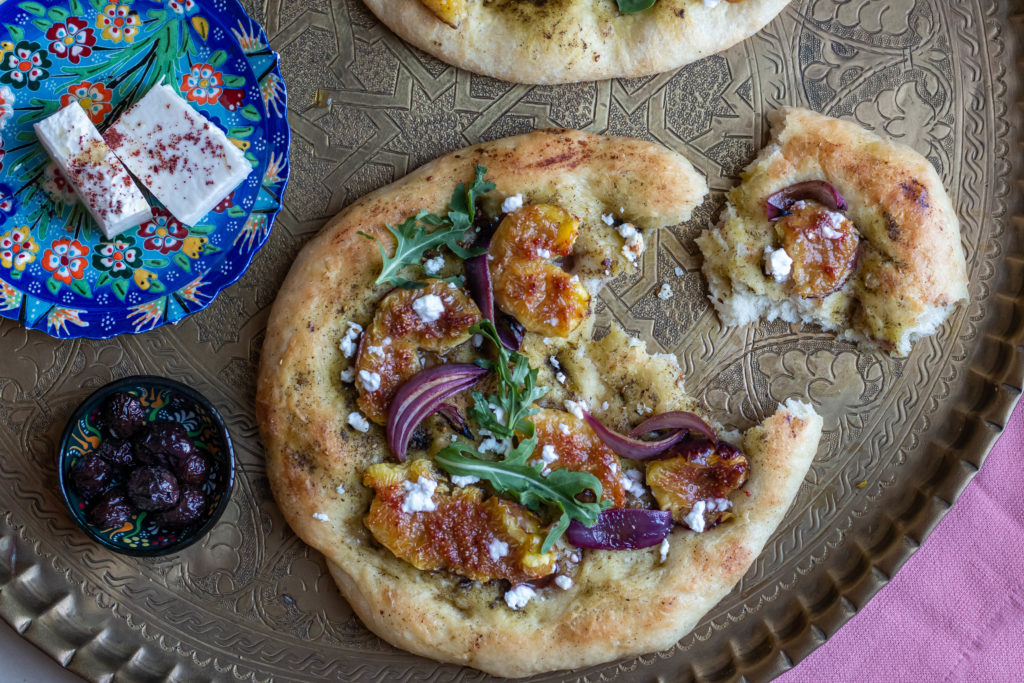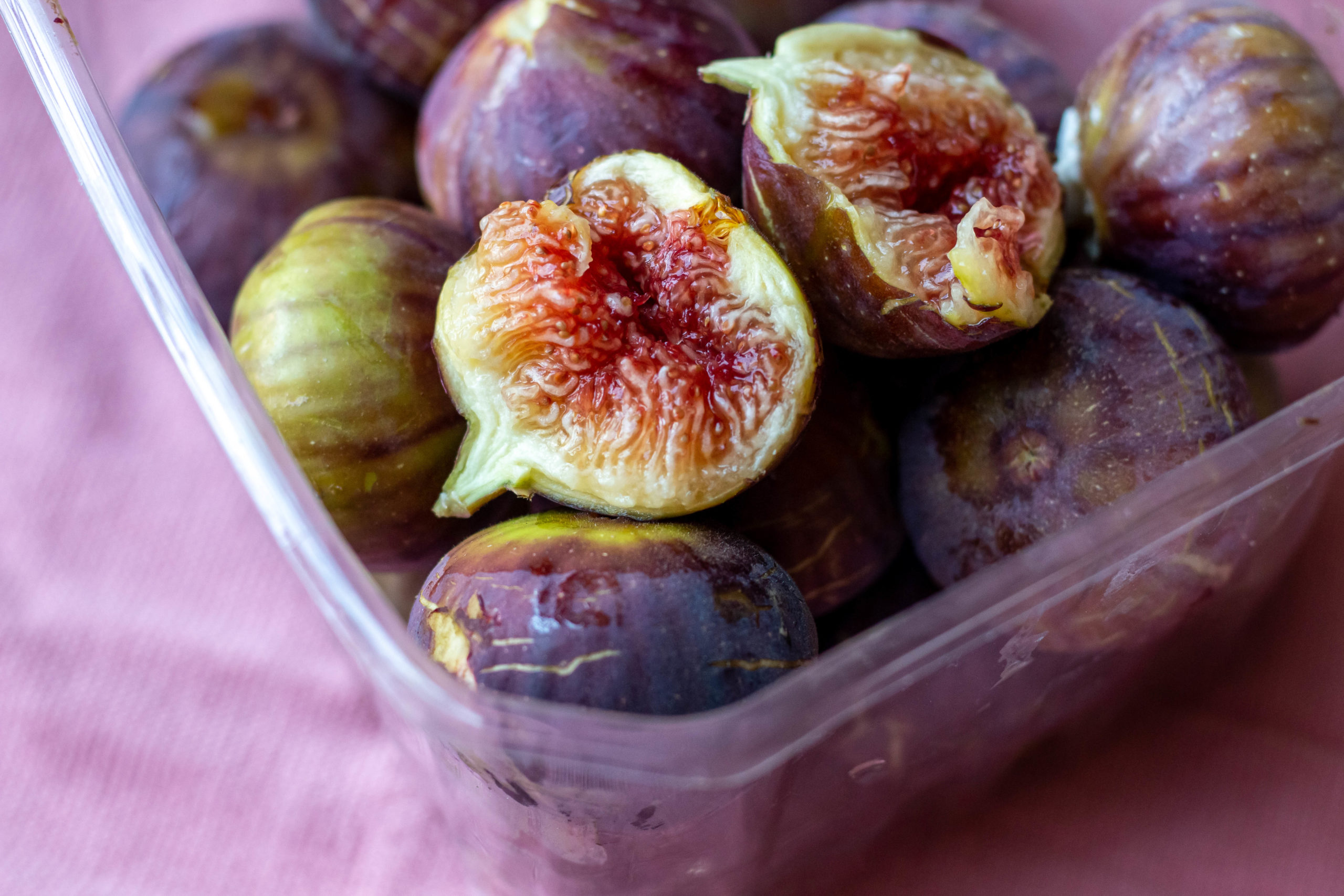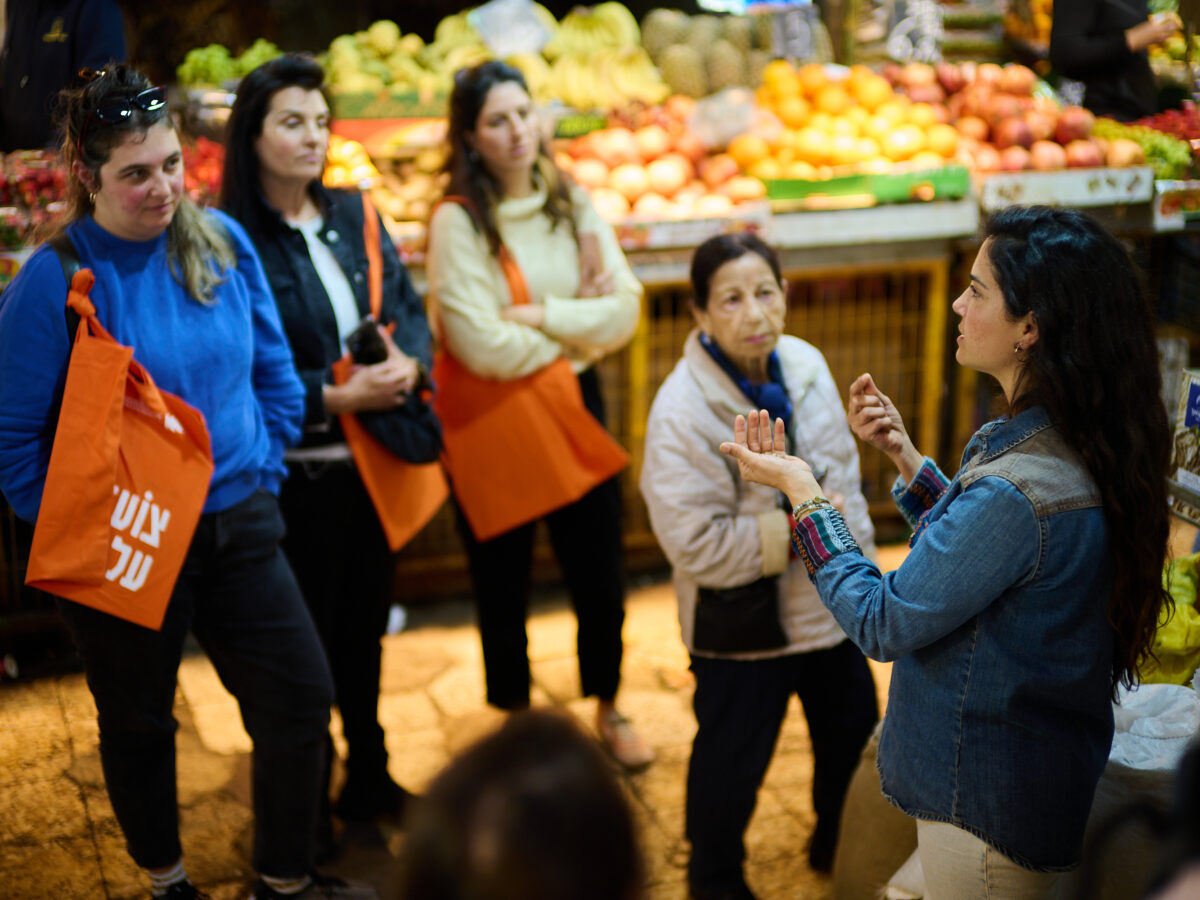“بلادي ما بحب الا بلادي, بلاد العنب والتين السوادي”
“My country, I shall love no other but you, my country of grapes and black figs.” — An Arabic Folkloric Song.
No other fruit or vegetable season makes me long for my youth as much as figs. This scorching hot season is my favorite time of the year, a combination of school-free, careless vacation, sun, and my birthday, which falls at the end of the summer.
My parents’ house lies at the outskirts of Kafr Qara, a town in the north, that opens onto lands of wild plants, like pear cacti (“sabres”) used as natural fences for agricultural plots, and several kinds of fig trees. The children of the neighborhood – all of us cousins – would spend the summers venturing into the wild fields. There, we picked the sweet summer fruit: the brave ones hammered an empty tin can to the end of a long stick to pick the cacti fruit, others “stole” peaches and grapes from the lot of Abu Ahmed, our farmer uncle. And I had an exceptionally good eye for spotting ripe figs.

Three varieties of figs were my favorites. The Asali (honey) figs, whose center had the color and taste of honey, grew next to my grandparents’ home. Grandpa presented a fierce competition, as he was always early to pick the ripe fruit – but he made sure to “miss” some, so there would be something left for me to find.
The second variety is the Bukraiti, whose name is probably derived from that of the Greek philosopher Hippokrates, in Arabic Boqrāṭ or Eboqrāṭ. It is green on the outside and bright red on the inside. For me, this tree was the source of great joy — it grew in an accessible, flat territory and was the first of the three varieties to ripen. It gave plenty of fruit, so I could eat as much as I wanted. I remember meeting one of the neighbors under this tree once; he was not tall enough to reach the figs and asked for my help, bitterly muttering the proverb: الطويل بياكل تين والقصير بموت حزين (the high man eats figs, the short one dies sad).
The third tree, the Souadi, was the most challenging of all three, but also the most rewarding. It grows on rocky, very thorny, uncultivated land. With time, a legend evolved around this tree, recounting the story of the amarah snake: a 100-year-old snake with horns which, once a year, can be spotted under the Souadi fig tree. Still, the black fruit with its red heart was an irresistible temptation, and I couldn’t stop picking until there was no more ripe fruit left. Unfortunately, the tree I loved as a child is long gone, yet the yearning for its now rare fruit assaults me every summer. Luckily, I was recently able to find it in a nursery which specializes in heritage trees – local and rare varieties of trees – and it will join my yard this coming winter, satisfying my longing
Figs in Local History and Culture
Asha’ab, the protagonist of folktales from 600-700 CE, was famous for his bottomless appetite for free food. An ancient joke recounts the story of him visiting a wealthy man. Knowing of Asha’ab gluttony, the man quickly hid a plate full of shami figs under his sofa. Asha’ab, who noticed his action, greeted him and offered to read him a Quran verse about the fig and the olive. When he (intentionally) omitted the fig, the wealthy man responded angrily: “Damned are you, where is the fig?” to which Asha’ab replied with a smile: “Under the sofa.” This story demonstrates the special, even religious, status of the fig in Arab and Islamic culture.

Some believe the fig originated in present-day Yemen. In 2006, researchers uncovered dried figs near Kibbutz Gilgal in the Jordan Valley from the early Neolithic period more than 11,000 years ago, likely making the fruit the oldest cultivated crop known to us. Moving around with different tribes, the fig adapted well to the local climate, and as a consequence, it can be found growing as a wild plant throughout our region.
Given the exceptionally long history of the fig, its wide distribution and multiple uses, it is no wonder it is frequently mentioned in the canonical texts of various religions. The fig tree is the first tree mentioned in the Torah, and it is also mentioned in ancient Pharaonic rolls. If we return to Islam, in the At-Tin surah (“The Fig chapter”) of the Quran, God mentions the olive and fig trees — considered the emblem of creation — as perfect trees.
Books about the life of prophet Muhamad frequently refer to his great love for the Damascus figs, famous for their exquisite taste. In one of these stories, the prophet calls the figs placed before him, “the fruit of paradise.”
Figs in Medicine and in the Islamic Arab Kitchen
Figs are also frequently mentioned in ancient medicine books. Ibn Zuhr also known as Avenzoar; (1094–1162 CE), a Muslim physician from Andalucia, quoted Greek physician Galenus (129 – c. 204/c. 216 CE), who crowned figs and grapes as the kings of fruit for their medicinal properties.
According to Ibn Sina, also known as Avicenna (980-1037 CE), a Muslim physician and philosopher considered the founder of modern medicine, figs are best consumed with nuts to maximize their nutritional benefits. When consumed fresh, he says, these fruits also assist in cleaning the liver and kidneys and are considered to be beneficial for pregnant and lactating women, as they support milk production.

In the kitchen, historically, fig sap – the whitish fluid secreted when picking the fruit or breaking a branch from the tree – was used to make krish cheese, a soft, ricotta-like cheese. Shepherds would add a few drops of fig sap to fresh sheep milk and mix it with a fig branch. The curd would quickly separate from the water, just like when vinegar is used to make ricotta, and the result would be a quick, soft and fresh cheese. This practice is continued in a few rural kitchens today where fig sap is also used to tenderize meat, similarly to yogurt.
In nearly every modern Arab kitchen, quttain or dried figs, are a valuable ingredient. In general, traditional Arab and Palestinian cuisine rarely uses fresh figs: figs were either enjoyed in their natural fresh form or preserved – as a jam or by drying. Ever since ancient times, people would collect fallen fruit from the ground, flatten them on a mushtah (drying board) and place them to dry in the sun. The dried figs were then squashed together to make a solid chunk, a davla, a vital food for Bedouins and nomads. In times of need, figs, as well as dates, were a significant nutritional source, and they appear in various historical recipes like those for fig-filled cookies or slow-cooked meat stewed made sweet with dried figs.

This month, I’m sharing a traditional Arab recipe for a simple-to-make milk pudding called malabi with dried figs and no added sugar; the figs both add flavor and assist in condensing the milk. For a more modern Palestinian recipe, I drew inspiration by the lunch farmers in the region used to eat in the fields and turned a pita with zaatar into a bed for roasted figs and local jibneh cheese.



